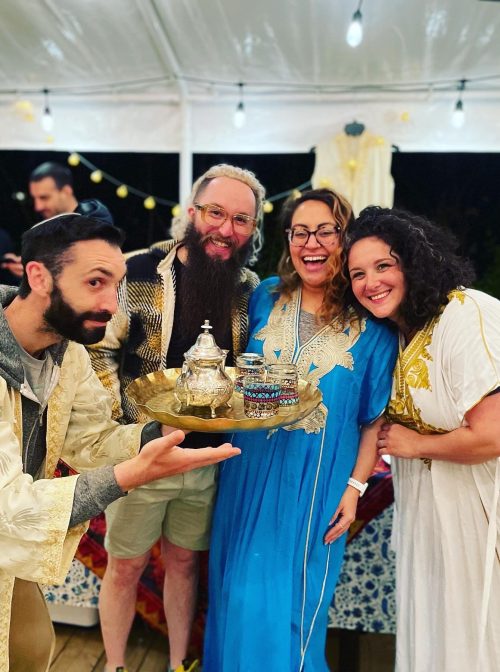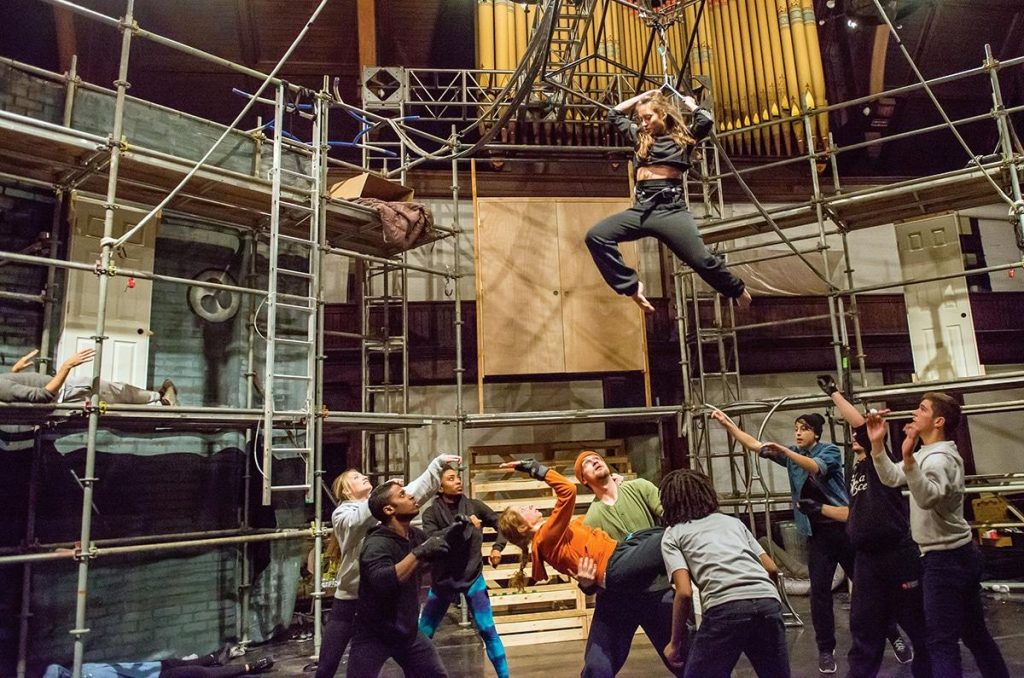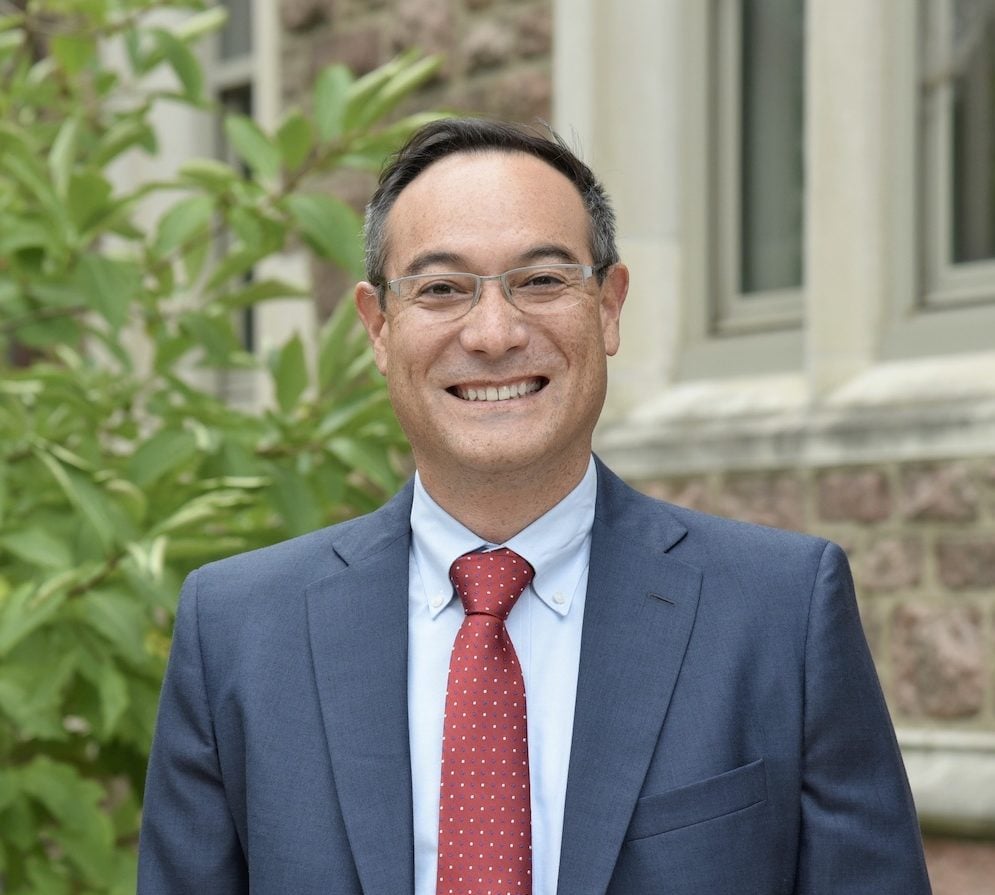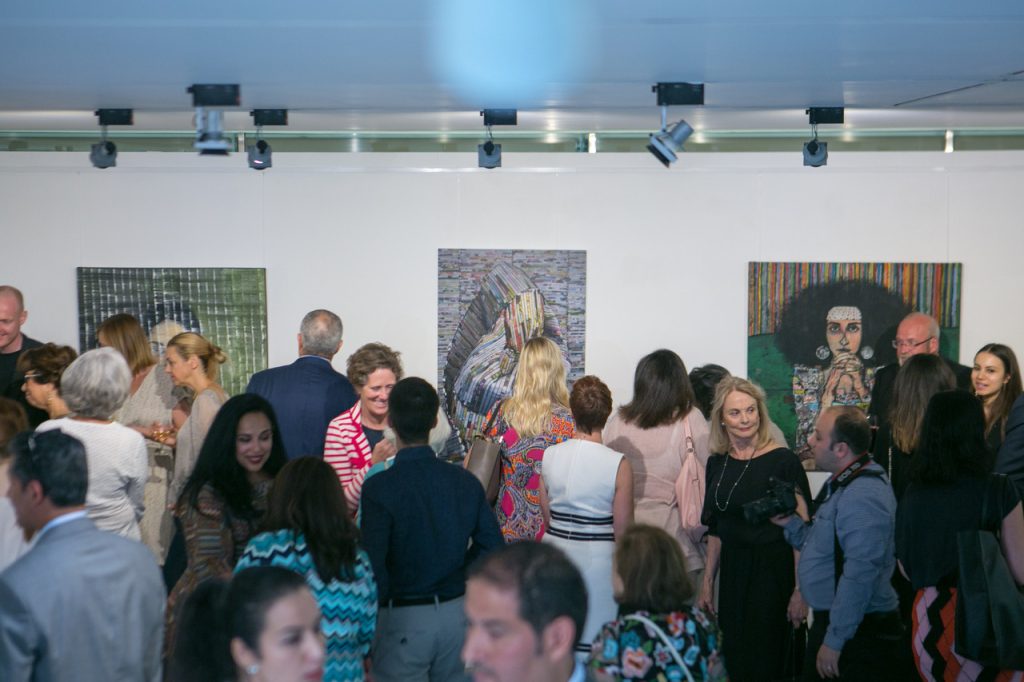(At the Well) — As a child I experienced the full effect of all Jewish holidays with my senses first. Shabbat smells like chicken and sounds like classical piano. Rosh Hashanah tastes like pomegranate seeds and feels like a fresh tablecloth from Israel. Pesach (Passover) brings a charoset smoothed by date paste, and Mimouna is her crowning glory.
Mimouna is a celebration at the end of Pesach which originated in the Moroccan Jewish community but is now broadly celebrated by Jews of many backgrounds. It marks the return to eating leavened items, chametz, after a week of abstaining from the many joys of yeast. Traditionally, Jews in Morocco would celebrate this evening and keep their doors open, inviting in anyone from any background to join in the celebration. This serves a dual purpose of demystifying Jewish homes and traditions, while also (most importantly) enjoying mufleta.
The sizzling oil, the melted butter, the sticky honey dripping from the growing pile of mufletot (the best fried dough pancake you’ve never had). It’s an olfactory experience that seeps from the nose to the belly and from the belly to the heart; from there it blooms into a full body experience. When we celebrate Mimouna, it starts with the nose and ends in a dance party celebrating the very essence of freedom.
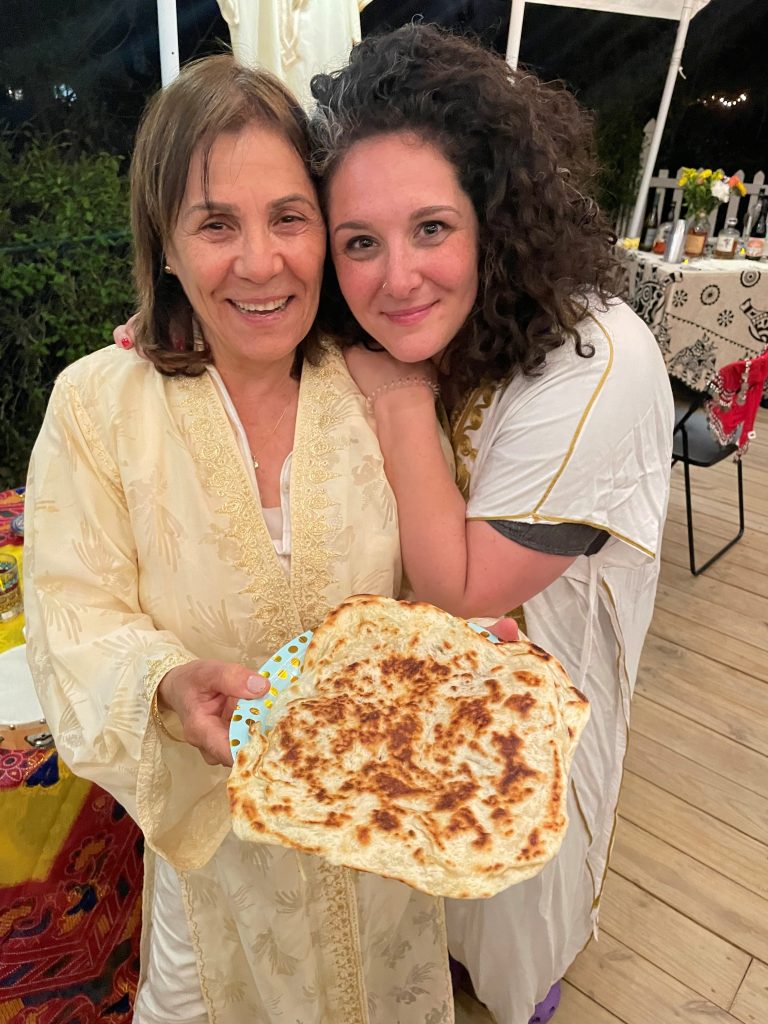
My mother was born in Jerusalem in 1957 to parents who fled Casablanca, Morocco, in 1948. My Saba (my grandfather Moshe) dreamed of raising a family there, knit tight with the yarn of tradition, religion, and Moroccan culture. The stories my mother and aunts have told me over the years about that upbringing vary in detail, but never in passion, joy, or about Mimouna.
My grandmother would spend the week before Pesach as a semi-pro crumb hunter, seeking out any chametz in sight. Next she would don her Pesach painting gear to give their two-bedroom apartment a fresh coat of paint. The shikun where they lived in the Musrara neighborhood of Jerusalem was a massive block of public housing created for Mizrahi Jews. The tight quarters echoed with the laughter of siblings and the scents of spices from Morocco. Less space always meant more corners to squeeze the joy out of.
My mother and her six siblings would scrub and shine the silver, move every piece of furniture out of the way to create seating for more than 20 or even 30 people crammed into that apartment. Everyone was welcome. Anyone without a seder to go to, anyone looking for a place to be in community, anyone who my Saba ran into that week: everyone. But that’s not all.
That week, my Savta (my grandmother Mazal) would purchase and subsequently “sell” all the Mimouna supplies. (Some Jews have a tradition of selling their chametz before Pesach.) She would prepare for both holidays at once — simultaneously preparing for two celebrations. One celebration of the freedom of our people, and a second celebration of pure Moroccan Jewish joy.
My mother started a new tapestry, strengthened by a deep commitment to her own Jewish joy.
The tradition in Morocco and in my Savta’s Jerusalem home was that it was an open-door policy. The scent of the oil and butter and fried dough would waft through the Musrara neighborhood, acting as an invitation to come in and share in the joy. Everyone knew to show up and to start singing, dancing, and eating. But I didn’t grow up in Musrara. I grew up in Bayside, Queens.
For all the love my mother has for her traditions, she chose to immigrate to the States with my dad in the early 1980’s. She came to a place without her family tapestry, woven in love in Jerusalem. So she started a new one, strengthened by a deep commitment to her own Jewish joy and a responsibility to her heritage. In a tiny apartment in Flushing, she made traditional almond cookies and orange peel preserves. Over time we moved to Bayside and then to Jericho, Long Island, and the celebration grew.
Mimouna was never quite a secret in the U.S., but over the last decade it has become more widely celebrated. This empowered my mother, who once felt a little ashamed that no one here knew about her beloved holiday. She began growing her Mimouna celebration, including a Mizrahi cantor who would lead songs in our living room, inviting her colleagues to our home. Their amazement at the cacophony of colors and sounds that characterize Mimouna added to the energy of my mother’s now full community of Israeli friends and “framily” (friends+family), creating a new tapestry. This one is born of determination, strengthened with time and understanding — with the scents of fried dough from her hometown permeating every fiber.
I have felt even more deeply the importance of bringing together folks from different backgrounds through the blessing of Mimouna.
In growing my own family, and in my work serving a vastly diverse Jewish community as the Executive Director at Hunter College Hillel, I have felt even more deeply the importance of bringing together folks from different backgrounds through the blessing of Mimouna. During the height of the pandemic, my mother hosted a mufleta-making Zoom for my students — bringing her sisters from Israel, her friends from across the U.S., and my students from all five boroughs to bid farewell to Pesach and welcome the warmth of Mimouna together-but-separately.
Last year, still in pandemic mode, my mom and I hosted a Mimouna celebration for my new community here in New Jersey, inviting over 50 friends to an outdoor tent and making the cookies, pastries, jellies and jams from scratch together. My then three-year-old son wanted to know why he couldn’t join (given that it was after his bedtime), so we created a mini-Mimouna to introduce him to the concept.
With tapestries and fez hats, darbukot (drums) and tambourines, bunches of mint leaves and an enormous silver kettle; with kaftans that my Savta brought from her mother’s house in Casablanca to Jerusalem; that my mother brought from Jerusalem to New York; which traveled over bridges and through tunnels — we brought a little bit of Casablanca to the Jersey suburbs.
When you host Mimouna, the woman of the house must be the first to make the dough. It’s a special blessing to be the first person to bring in the blessing of bread to our homes after eight days of commemorating slavery and celebrating freedom. The Talmud says Ein Kemach, ein torah, “without flour, there is no Torah.” Mimouna celebrators take this seriously. In bringing (fried) bread back into our homes, we feed our families, our communities, and nourish the very soul of Jewish community. And for me, it will always start in my nose.
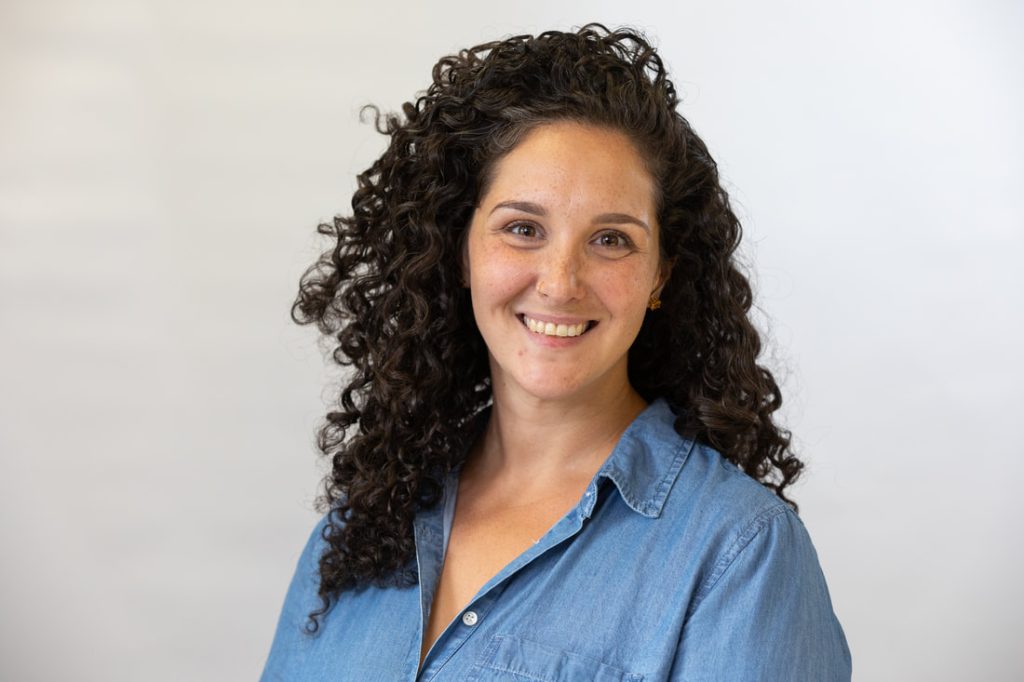
Merav Fine Braun is the Executive Director of Hunter Hillel. She is a proud Israeli Moroccan New Yorker who lives in New Jersey with her family. Merav is a fierce advocate for seasoning at every stage, the color yellow, and curly hair care.
